New Forest
Beaulieu Road, Shatterford/Denny Wood |
|
|
This is a rewarding site for most of the year. In spring and summer Dartford Warbler, Redstart, Wood Lark, Lesser Spotted Woodpecker, Wood Warbler, Hawfinch, and Hobby can be found, as well as breeding waders such as Curlew. During the summer evenings this is a good spot to see Nightjar and roding Woodcock, along with drumming Snipe. In winter, Great Grey Shrike, Crossbill, or even Hen Harrier may be found. Denny Wood is renowned as a fungi site - over 50 species may be encountered on even a casual visit. On the heath, this is a good area for New Forest Gladiolus - but the plant is notoriously hard to find. A faint Daphne-like scent at dusk mght offer a clue as to where to search in the dense bracken cover.... Fallow Deer are particularly frequent
and obvious here.
|
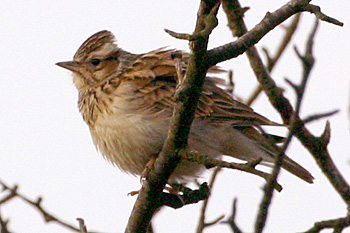 |
Crockford Bridge/
|
|
|
This area is superb for dragonflies in the summer, and has been famous for Odonata for over 150 years. On a good day you can see Emperor, Golden-ringed Dragonfly, Beautiful Demoiselle, Emerald, Small Red and Southern Damselflies, Black Darter and both Black-tailed and Keeled Skimmer. For
butterfly interest, there are also plenty of Silver-studded Blue
and Grayling.
|
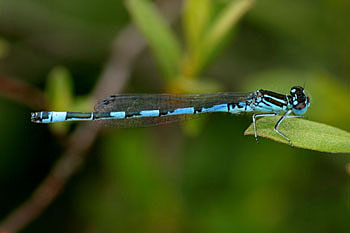 |
Eyeworth Pond/Fritham |
|
|
A
picturesque spot, where you can see Mandarin Duck
very easily, as they breed here. Occasionally Goosander have
been seen on the pond itself in the winter. The surrounding area
of woodland and heathland can hold Redstart, Lesser Spotted
Woodpecker, Willow Tit, Stonechat, Dartford Warbler,
Tree Pipit, Woodlark, Hawfinch and other regular
New Forest species, including raptors.
|
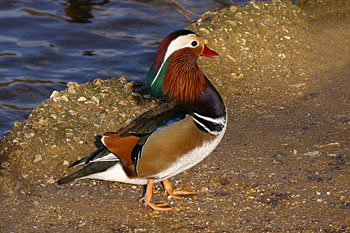 |
Blashford Lakes/Ibsley |
|
|
In the winter a dwindling number of Bewick's Swans feed in the water meadows by the River Avon. The lakes themselves are flooded gravel pits, and are mainly of interest in the winter, generally for wildfowl including Goosander, Goldeneye and internationally important numbers of Gadwall, plus the occasional Smew. A Great White Egret was present for some of last winter too. Passage birds may include Green and
Wood Sandpipers, Black Tern, Black-necked
Grebe and huge numbers of hirundines. Yellow-legged
Gulls regularly roost here.
|
 |
Vales Moor |
|
|
An open area of heathland which has held Great Grey Shrike in the winter. Also present are the usual New Forest heathland species such as Dartford Warbler, Stonechat and Woodlark. The rare pulchella form of Early Marsh Orchid occurs at Strodgemoor Bottom, along with all three Sundew species. Cranes
Moor, further south towards Burley, is an important site for Orthoptera
- the variety of dry heath and valley mire habitats hold a very
special combination of Heathland, Mottled and Large
Marsh Grasshoppers, Bog Bush-cricket and Long-winged
Conehead. |
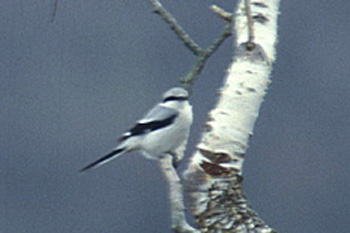 |
Mark Ash Wood/
|
|
|
Bolderwood is a busy and popular spot, with a deer viewing platform, but the surrounding area of woodland can be very productive.The nearby Mark Ash Wood is a wonderful area of ancient woodland which is best experienced in spring, when there are all three Woodpeckers, along with Redstart, Firecrest, Wood Warbler, Brambling and Crossbill. Tawny Owl may regularly be seen in daylight here. To
the south of the A35, the Blackwater Arboretum is well known for
its Hawfinch roost in the winter months. |
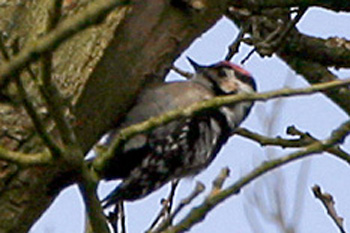 |
Slufters/Milkham Inclosures |
|
|
These forestry plantations can seem to be devoid of wildlife, but the clearings and surrounding areas hold Tree Pipit and Crossbill - and a Two-barred Crossbill was seen here once! Spotted Flycatcher and Wood Warbler may been found here too. The
pools in the Slufters area (at Milkham Bottom) have a good selection
of dragonflies, including Emperor Dragonfly, Black Darter,
Black-tailed Skimmer and Emerald Damselfly, plus Common
Hawker on rare occasions. |
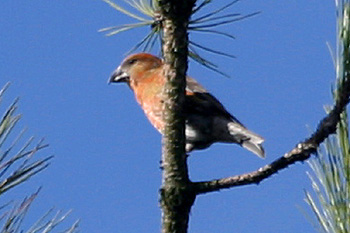 |
Bramshaw area |
|
|
Bramshaw Wood (described by no lesser a botanist than Francis Rose as "the finest lowland high forest in Europe") can be productive for Wood Warbler and Redstart in the spring, and Dartford Warbler and Woodlark are found on the surrounding heathland. The flora of the heaths and mires is very rich and includes sundews, Bog Asphodel, Marsh St John's Wort, Penny Royal and Small Fleabane. Invertebrates
include the usual heathland butterflies such as Grayling,
Silver-studded Blue and Green Hairstreak. Fairy
Shrimp, Raft Spider, Scarce Blue-tailed Damselfly
also occur. |
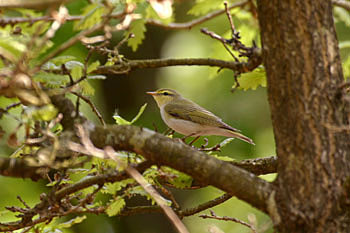 |
Black Gutter Bottom/
|
|
| Black Gutter Bottom and Cockley Plain can be excellent for specialist wintering birds. There is also usually a Great Grey Shrike in the general vicinity during the winter. In the summer you can find Hobby, Kestrel and even Raven, and there have been sightings here of Peregrine, Red Kite and Honey-Buzzard. |
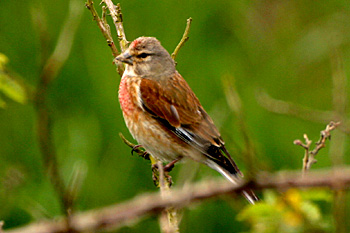 |